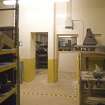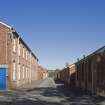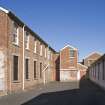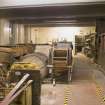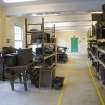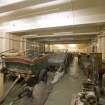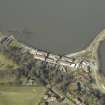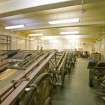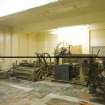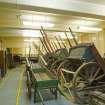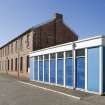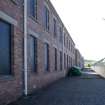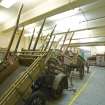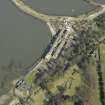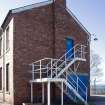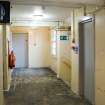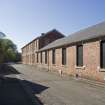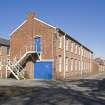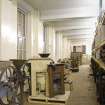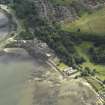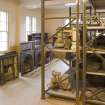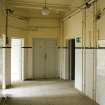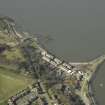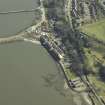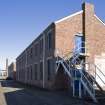Pricing Change
New pricing for orders of material from this site will come into place shortly. Charges for supply of digital images, digitisation on demand, prints and licensing will be altered.
South Queensferry, Port Edgar Harbour, Barracks
Barracks (First World War), Barracks (20th Century)
Site Name South Queensferry, Port Edgar Harbour, Barracks
Classification Barracks (First World War), Barracks (20th Century)
Alternative Name(s) Hms Lochinvar; Barrack Blocks A To E
Canmore ID 136604
Site Number NT17NW 181.08
NGR NT 1165 7870
NGR Description Centred NT 1165 7870
Datum OSGB36 - NGR
Permalink http://canmore.org.uk/site/136604
- Council Edinburgh, City Of
- Parish Dalmeny
- Former Region Lothian
- Former District City Of Edinburgh
- Former County West Lothian
The naval barracks at Port Edgar date from about 1918 and comprise a group of one- and two-storey brick-built, slated buildings with regular windows. The barracks was originally intended to house the personnel for the Torpedo Boat Destroyer base at Port Edgar. The barracks were in military use until 1927, after which they were used as accommodation to give poor families a holiday. The barracks were re-occupied in the Second World War, in part as a naval hospital, when Port Edgar was the main mine-sweeping base for Scotland. The 4th epoch OS 1:10560 map (surveyed 1948) shows the complex of buildings labelled "Royal Naval Hospital".
Information from HS/RCAHMS World War One Audit Project (GJB) 11 September 2013.
NT17NW 181.08 centred 1165 7870
The former barracks buildings are sitauted at the W end of Port Edgar Base. Two storeyed with slated roofs built of brick with concrete lintels to windows and doors. Windows are sash type with glazing bars (astragals).
External metal stairs from the first floor and there are cast iron ornamental external light fittings at the corners.
At the W end of this group is the sick bay building.
All buildings are lettered (according to the official plan), Barrack Blocks A to E. Faded painted signs were noted at the lower corners and an earlier very faded painted sign 'A and B' on a concrete lintel above a bricked up entrance, possibly a previous numbering system.
Information to follow.
Group of 1- and 2-storey red brick gabled barrack buildings with regular fenestration, arranged on narrow site either side of central access road. Concrete window cills and lintels. Predominantly small-pane glazing in timber sash and case windows (most windows boarded up 2006). Welsh slate roofs with terracotta ridge tiles. Cast-iron rainwater goods. Some decorative cast-iron street-lamp brackets attached to buildings.
Built in 1918 as the barrack accommodation for Port Edgar, which has considerable historical interest for its former use as a Royal Naval base for the servicing of Torpedo Boat Destroyers in the 1st World War and as a Minesweeping base in the 2nd World War. These buildings as a group stand as a rare and intact example of a naval barracks. Port Edgar was acquired by the Royal Navy in 1916, and was commissioned as HMS Columbine in 1917 for use as a Destroyer Base for the Grand Fleet. Unlike most ships, Destroyers were not self-supporting and required special servicing facilities that were provided at Port Edgar. This set of buildings were used as barracks until 1927, when the Navy temporarily moved out of the site. During the 1930s the barracks were used as holiday camp accommodation for poor families. Prior to the 2nd World War, it was decided to move the existing military hospital at Butlaw (situated a few hundred yards to the N) into the barracks. The 1938 operating theatre was built at this time. During the 2nd World War Port Edgar was commissioned as HMS Lochinvar and became the main minesweeping base in Scotland. It continued in use as the Royal Navy's training base for minesweeping until it closed in 1975. (Historic Environment Scotland List Entry)
Project (March 2013 - September 2013)
A project to characterise the quantity and quality of the Scottish resource of known surviving remains of the First World War. Carried out in partnership between Historic Scotland and RCAHMS.






































